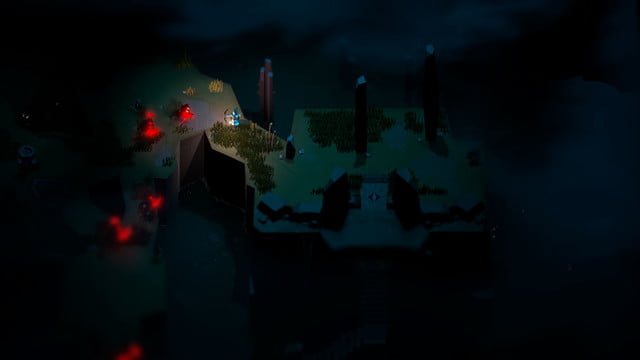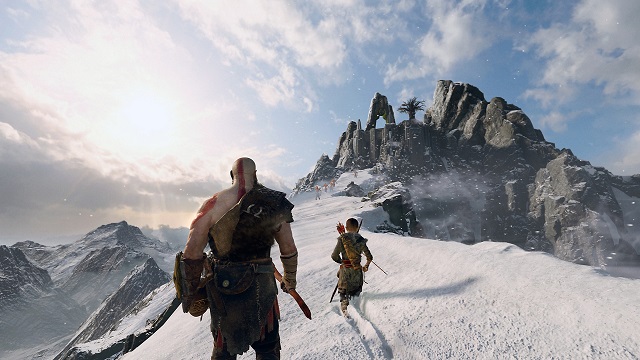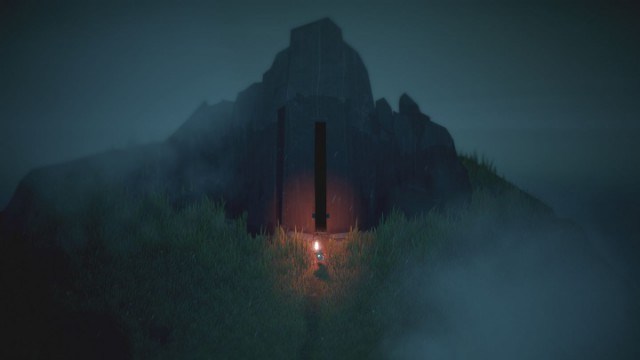At the start of Below, you are the tiniest of specks. The island the game is based upon is huge against an impossibly vast and empty ocean, and with the camera so zoomed out, you can see almost how large and empty it is. When you finally disembark on the beach and the camera has zoomed in, you are still just a speck on a screen. The player is immediately made to feel small and weak and vulnerable in Below because its world is huge and you are tiny. And this is all done through a relatively simple camera trick, which shows how powerful a game’s camera can be.
Camera work is vitally important in film and is one of the simplest and most effective ways to influence the audience. A low angle shot creates the impression that the subject is larger and powerful, because the audience is literally forced to look up at them. The opposite in true of a high angle shot. Of course, there are a million other shots that have different subtle and powerful effects on the audience.
And while not quite the same, the camera can be equally effecting in video games. Because the camera is usually controlled by the player, it can be difficult to influence them through it. But there is still a lot a game can do and it is most easily expressed in the way it frames the player, which can influence the mood and atmosphere of the game.
The aforementioned Below is another good example of this. It makes you feel small, insignificant, and powerless. It is a feeling that the game wants you to accept before the action even begins, so that you know you are not the biggest, strongest force in the game. Like a lot of roguelikes, you are weak and flimsy, and this camera trick enforces that feeling in you from the very beginning. But it’s not just about your weakness, but also your isolation. You can see far around your little avatar and there is no one else around you. No friendly face or companion character to rely on.
So small

This is also true of games that have a similar theme, such as Titan Souls and Shadow of the Colossus. Titan Souls abandons the player in the middle of the screen and then surrounds them with wilderness and ruin to highlight how alone they are. Shadow of the Colossus has Wander explore a world of huge manmade and natural structures that make the player feel small, which helps prepare the player before the trick is heavily reinforced by the gigantic creatures you have come to slay. The camera even pulls back frequently, showing off more of the barren, beautiful landscape and your relative insignificance in it.
Bloodborne and the Dark Souls series also use this framing device. They utilize the camera framing to make bosses appear so massive that you cannot comprehend them all at once. These creatures are seen from your diminished perspective as well, meaning that the player is forced to look up at the beasts, creating a low angle shot and the feeling that goes a long with it. This not only creates a sense of strength and intimidation from the beast, but of mystery and subterfuge. There is always something that the player cannot see, something hidden out of sight, which also fits in with the H.P. Lovecraft origins of that franchise.
So big

Like with low and high angle shots in film creating opposite meanings, the same is true for framing in games. The camera in this year’s God of War clung close to Kratos’ back, filling the screen with his broad physique. Kratos dominates the frame in God War, sometimes to the point where he appears as tall as the mountainous environment, which overwhelmingly creates a feeling of strength and power. But the camera also has another meaning in God of War.
Camera angles are not solely for highlighting a character’s strength or weakness after all. The constant close up of Kratos also signifies the narrative importance of the character. When the original God of War games released, the camera was pulled out to focus more on the action, not the character. The newest game tells a much more intimate tale of Kratos, and as such the camera is much closer to him, just like the player. It also helps differentiate the previous entries at a glance.
And this technique of changing the camera to move away from the game’s predecessor is not just true of God of War either. Resident Evil 7 became instantly noteworthy because of its first-personn perspective, which no other traditional Resident Evil game had done before. But again, behind the change was a more personal story and setting that demanded the player become more involved. The intimate viewpoint also made the game scarier, which helped the game return to its survival horror roots.
In games, this is by no means an exact science and not every use of framing is an example of the developers attempting to create a certain tone. Some games like Assassin’s Creed and PUBG use more standard camera angles and the reason behind this is more mechanical than emotive. Other games use the camera to help highlight and celebrate the art design more than the tone of the game. But more and more we are starting to see the camera used similarly to film, even when the player has control over the camera. And just like films, the camera is a tool that some developers use well.







